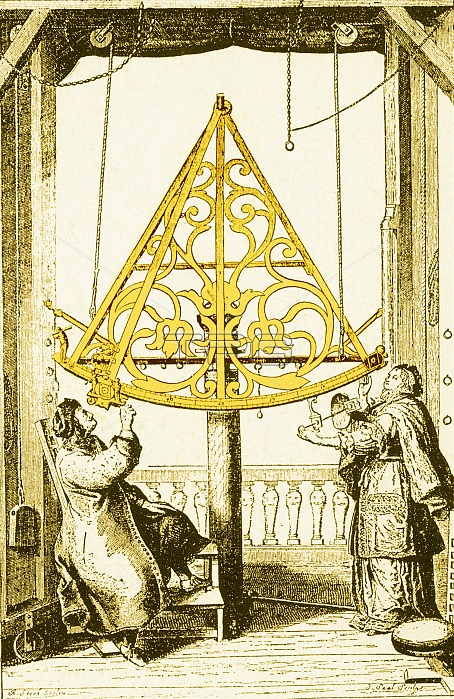
Hevelius and his wife Elisabetha observing the stars from Hevelius' book "Machina Coelestis" (Celestial Machine). Johannes Hevelius (1611-1687) was a Polish astronomer. He is remembered as the founder of founder of lunar topography, who also described ten new constellations (seven of which are still recognized by astronomers). Hevelius is regarded as having been the greatest astronomer in Poland after Copernicus. He was also a councilor, mayor of Danzig and was taught the art of brewing from his father, a wealthy merchant of Bohemian origin. Throughout his life, Hevelius took a leading part in municipal administration, but his chief interest was astronomy. In 1641 he built an observatory on the roofs of his three connected houses. The observatory was known by the name Sternenburg or "Star Castle". Hevelius made observations of sunspots, 1642-1645, devoted four years to charting the lunar surface and discovered the Moon's libration in longitude. He discovered four comets, in 1652, 1661,1672 and 1677. These discoveries led to his thesis that such bodies revolve around the Sun in parabolic paths. His observatory, instruments and books were destroyed by fire in 1679. He promptly repaired the damage enough to enable him to observe the great comet of December 1680. He named the constellation Sextans in memory of these lost instruments. His health had suffered from the shock of the 1679 fire, and he died on his 76th birthday.
| px | px | dpi | = | cm | x | cm | = | MB |
Details
Creative#:
TOP22155694
Source:
達志影像
Authorization Type:
RM
Release Information:
須由TPG 完整授權
Model Release:
N/A
Property Release:
No
Right to Privacy:
No
Same folder images:

 Loading
Loading